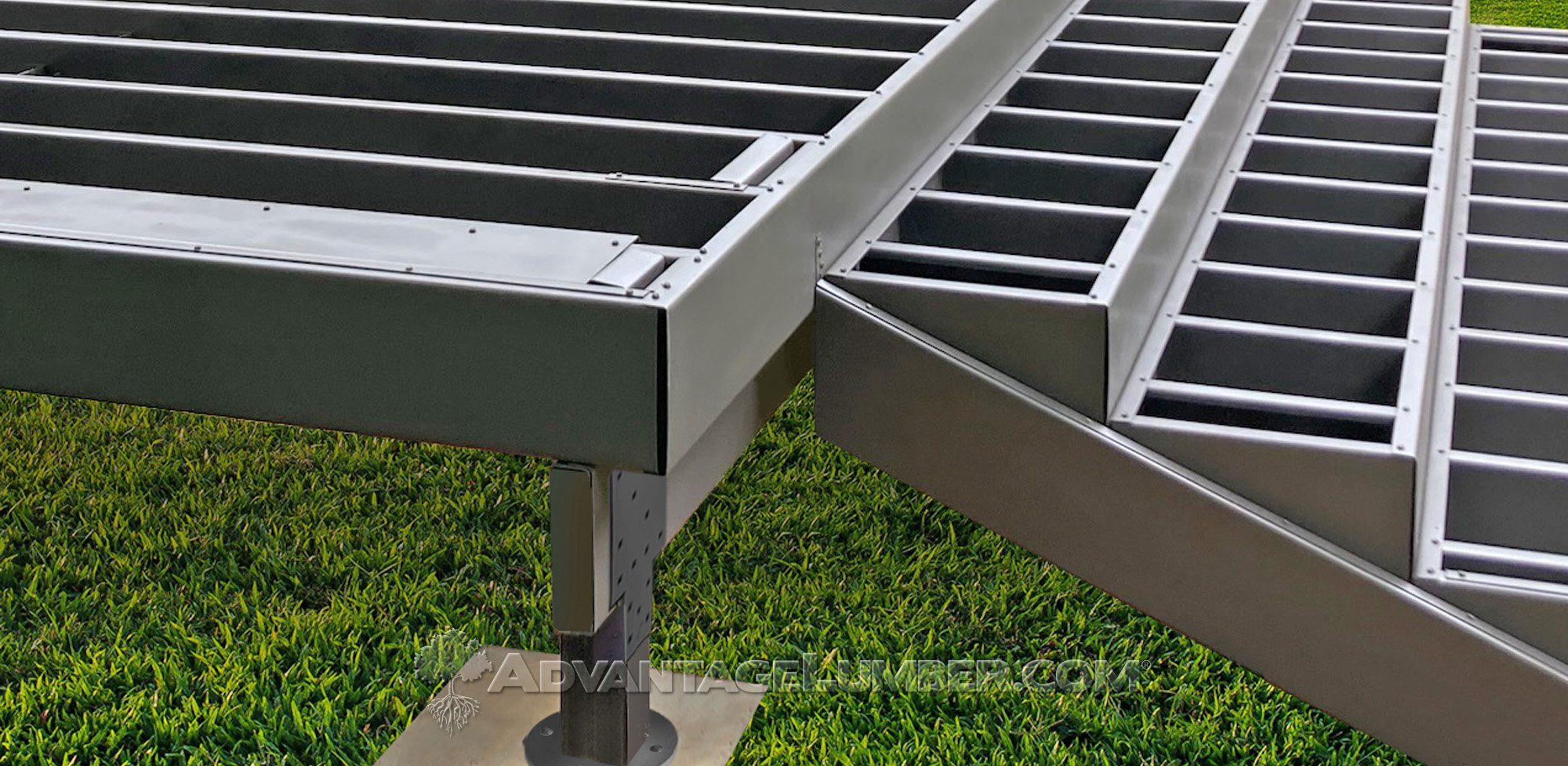In recent years, there has been a notable shift in the decking industry, with steel deck framing emerging as a popular alternative to traditional pressure-treated lumber. This trend is largely driven by the decreased longevity of new pressure-treated lumber compared to the older versions that contained arsenic.
Let’s discuss why steel deck framing is gaining traction and how it addresses the limitations of modern pressure-treated wood.
The Shortcomings of New Pressure-Treated Lumber
Traditionally, pressure-treated lumber has been the go-to material for deck joists due to its affordability and resistance to rot and pests. However, environmental and health concerns led to the phasing out of arsenic-based preservatives in wood treatment.
While this move was beneficial for safety, it inadvertently affected the durability of the lumber. The new pressure-treated wood, though safer, tends to degrade faster, often leading to shorter lifespans for decks.
Enter Steel Deck Framing: A Game-Changer
Steel deck framing has emerged as a robust solution to the pitfalls of new pressure-treated lumber. Here’s why it’s becoming increasingly popular:
1. Longevity and Durability
- Resistance to Elements: Steel is highly resistant to moisture, rot, and insect damage, outperforming wood in harsh weather conditions.
- No Warping or Twisting: Unlike wood, steel doesn’t warp, twist, or shrink, ensuring a stable and long-lasting deck structure.
2. Sustainability and Safety
- Eco-Friendly: Steel is recyclable, making it a more environmentally friendly option compared to wood, which often ends up in landfills.
- Non-Toxic: Unlike treated lumber, steel does not contain chemicals that can leach into the environment.
3. Ease of Installation and Versatility
- Uniformity: Steel joists are consistently straight, making the installation process smoother and faster.
- Compatibility: Steel framing can support a wide range of decking materials, including traditional wood and composite decking.
4. Cost-Effectiveness Over Time
- Long-Term Investment: While the initial cost of steel can be higher than wood, its longevity and low maintenance requirements make it a cost-effective choice in the long run.
5. Aesthetics and Design Flexibility
- Sleek Look: Steel offers a modern, sleek look that can complement various architectural styles.
- Creative Freedom: The strength of steel allows for more innovative and expansive deck designs.
Real-Life Applications and Success Stories
Homeowners and builders who have transitioned to steel deck framing often report higher satisfaction rates due to the material’s durability and low maintenance needs. Many have found that the initial investment in steel pays off through reduced repair and replacement costs over the years.
Additionally Contractors and home builders find they receive less call backs on decks built with a steel frame. This is due to the steel joists remain flat opposed to the pressure treated joists can bow and wove in undesirable ways after a deck is built.
This often can push up deck boards making the deck surface uneven and customers unhappy. Many contractors and home builders end up having to go back and fix the problems at no cost to the customer.
Conclusion: The Future of Deck Building
The rising popularity of steel deck framing marks a significant shift in the decking industry. As we continue to seek sustainable, durable, and safe building materials, steel stands out as a formidable alternative to pressure-treated lumber. Its ability to withstand the test of time, coupled with its environmental and aesthetic benefits, positions steel deck framing as a leading choice for future deck construction projects.
